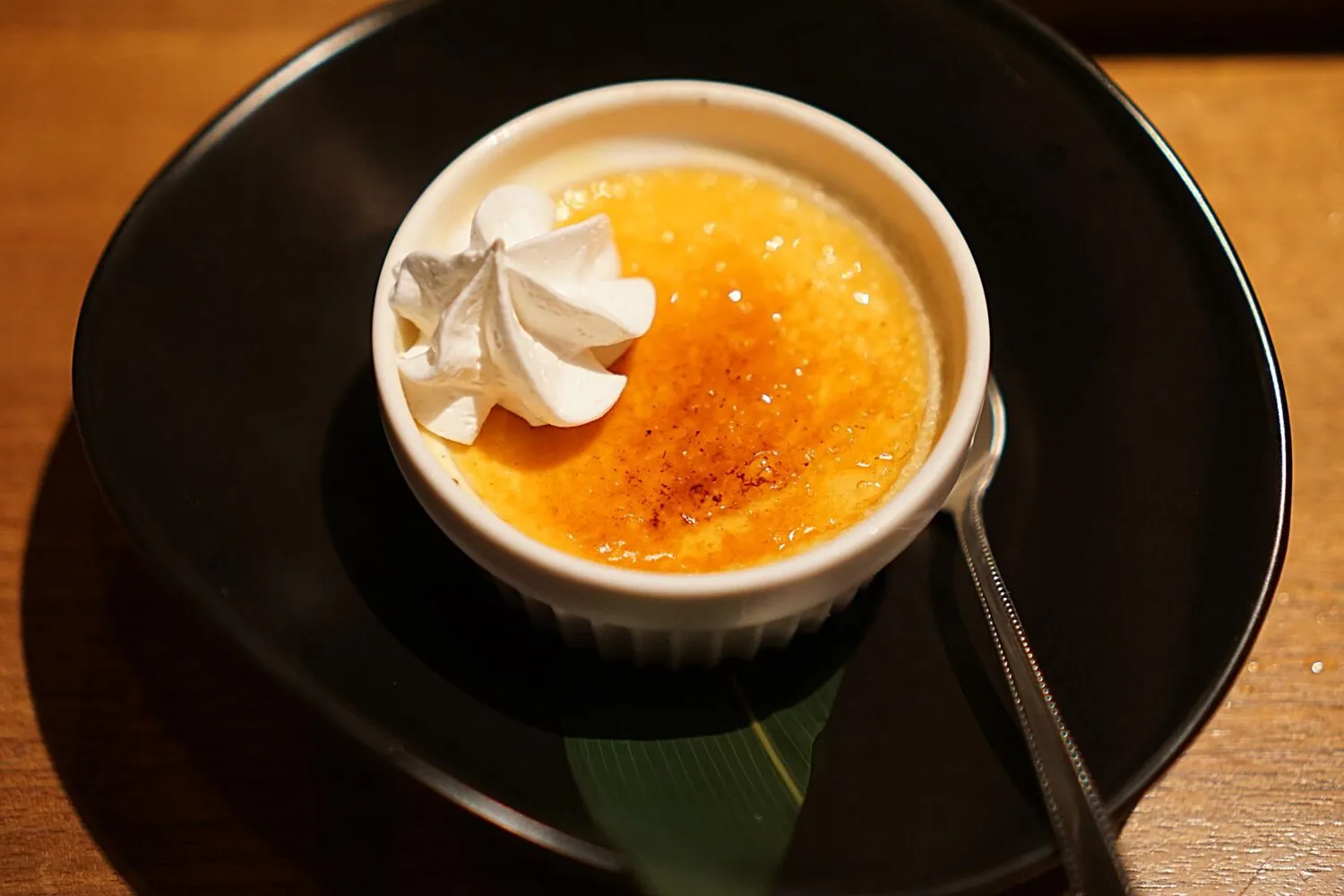
Tarte Tatin
Several reviews mention and recommend the Tarte Tatin.
Nutrition Facts
* The % Daily Value (DV) tells you how much a nutrient in a serving of food contributes to a daily diet. 2,000 calories a day is used for general nutrition advice.
Le Jeanne Hachette Salon De The - Brasserie
Tarte Tatin is a classic French upside-down apple tart with a caramelized sugar base. Its creation is attributed to the Tatin sisters, Caroline and Stéphanie Tatin, who ran the Hôtel Tatin in Lamotte-Beuvron, France, in the late 19th century. Legend has it that Stéphanie, who did most of the cooking, accidentally overcooked the apples in butter and sugar while preparing a traditional apple tart. In an attempt to rescue the dish, she placed the pastry base on top of the pan of caramelized apples and finished baking it in the oven. After inverting the tart, it was found to be delicious and became a signature dish of the hotel.
Tarte Tatin is a beloved French dessert that has become a symbol of rustic elegance and culinary ingenuity.
Culinary Symbol
Tarte Tatin is often featured in French cuisine literature and culinary schools, representing a classic technique and a testament to accidental innovation.
Regional Variations
While the classic version uses apples, regional variations exist, featuring other fruits like pears, peaches, or even vegetables like onions.
Home Baking Favorite
It remains a popular dessert to make at home, appreciated for its relatively simple preparation and impressive results.
Tarte Tatin is characterized by its sweet and slightly tart flavor profile, complemented by the rich, buttery notes of caramelized sugar and pastry.
The primary flavor is derived from the caramelized apples, which develop a deep, concentrated sweetness with hints of tartness. The caramelization process imparts a rich, buttery flavor and a slightly chewy texture to the apples. The buttery pastry crust provides a contrasting texture and a subtle savory element that balances the sweetness of the apples and caramel. Some variations may include spices like cinnamon or vanilla, adding further complexity to the flavor profile.
Apple Selection
Use firm, slightly tart apples that hold their shape well during cooking, such as Granny Smith, Honeycrisp, or Pink Lady.
Caramelization
Allow the sugar to caramelize slowly and evenly, monitoring the color carefully to avoid burning. A deep amber color indicates optimal caramelization.
Pastry Placement
Ensure the pastry covers the apples completely and is tucked in around the edges of the pan to create a tight seal.
Inversion Technique
Let the tart cool slightly before inverting it onto a serving plate to prevent the apples from sticking to the pan. Handle with care.
Explore additional Dessert dishes and restaurants
Explore DessertDiscover top dining spots and culinary experiences in Beauvais.
Explore BeauvaisLearn more about the food culture, restaurant scene, and culinary heritage of France.
Explore France